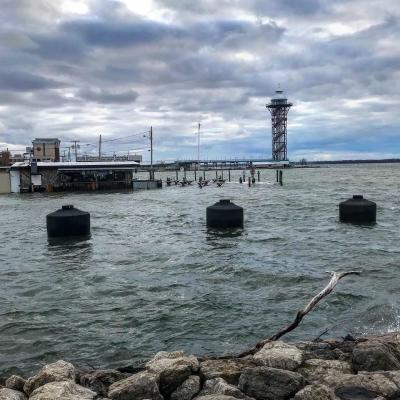Taking Climate Action
Erie among 20 participating municipalities in Pa. DEP program
Climate change is everywhere, and Pennsylvania certainly falls under that category. The 2020 Pennsylvania Climate Impacts Assessment, furnished to the state's Department of Environmental Protection (DEP) by the Penn State University Environment and Natural Resources, yielded these takeaways. Since 1901:
- The average temperature statewide has increased by 2o F
- The state's average annual rainfall has increased 10 percent
- The frequency of extreme weather events, in terms of either precipitation or temperature, have both also increased
If we continue on a trajectory established by 2000 data, Pennsylvania would see an additional:
- Increase in average rainfall of 8 to 12 percent (particularly in winter and spring)
- Increase in average temperature of 4.9o F
Projections like these worry more than just environmentalists — a warmer, wetter Pennsylvania would affect agriculture, recreation, transportation, infrastructure, and the economy — as we've seen time and time again, the societal and natural ecosystems are very much intertwined. So much so that Pennsylvania Governor Tom Wolf tabbed climate change as the most critical environmental threat facing the world in 2019.
In light of this, Wolf and the DEP have set goals, specifically in lowering greenhouse gas emissions — those that trap heat and moisture and generally throw off the balance of a delicate interplay of atmospheric cycles. The target is a 26 percent reduction of emissions over 2005 levels by 2025, and an 80 percent reduction by 2050. The warming trend will continue nonetheless, but by taking action on an individual and community-wide level, we can mitigate the severity of it.
To help communities implement these measures, the DEP established the Local Climate Action Assistance Program, which has already aided 20 municipalities (including Erie) develop a risk management plan as it pertains to climate change. Municipal leaders and Pennsylvanian colleges teamed to track greenhouse gas emission levels across the industrial, residential, commercial, solid waste, and transportation sectors and reviewed the strategies contained within the DEP's 2018 Pennsylvania Climate Action Plan (which will next be revised in 2021 to reflect).
Given that Erie County sits squarely in a major watershed, that of our most precious resource in Lake Erie, it's important we take their counsel to heart. Recreation and tourism, two big drivers of our economy, are jeopardized by visible problems like flooding and harmful algal blooms — not to mention our health. The repercussions of environmental issues such as these will have lingering effects — far beyond what we're currently experiencing with COVID-19 — unless we adjust.
To counteract these phenomena, for instance, we might look at facilitating travel by foot or bicycle (to reduce carbon emission that warm the atmosphere), examining the livestock feed or fertilizer formulations we're using (that may be rich in the nitrogen or phosphorus that supply algal blooms), and reinforcing riparian barriers, vegetated areas that control runoff (aka nonpoint pollution, nutrients and contaminants from diffuse sources that collect in one place, such as Lake Erie).
Earth has received a bit of a breather from human activity during the coronavirus pandemic. When our daily commutes and lives resume at their normal clip, we'd do best not to go hurtling into its chest by being a little smarter and a little more conscientious.
Matt Swanseger enjoyed a walk at a dry Dobbins Landing on Easter Sunday, exactly one day before it was underwater. Email him at mswanseger@eriereader.com, or better yet plant a tree this Arbor Day.




